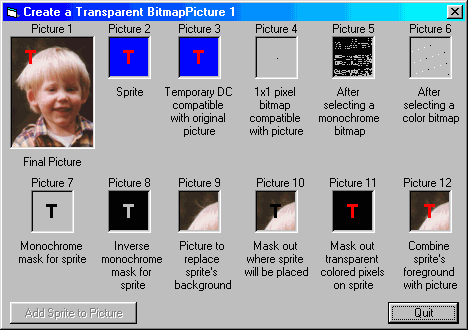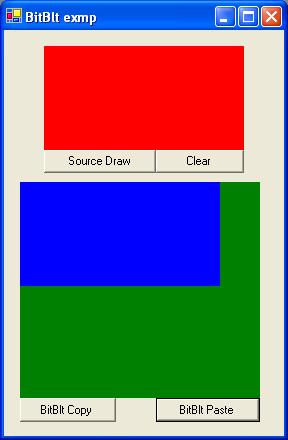Bit blit
As Bit blit ( Bit Block Transfer Image, as BitBlt or something similar for bit block transfer) refers to a computer operation that is responsible for fast copying and moving of memory contents ( blitting ). Bit blit can be implemented as either a software procedure or function of a hardware-based graphics output (graphics card, chip or chipset); in the case of a dedicated chip is referred to this as a blitter.
Bit blit goes back to the so-called RasterOp specification of Newman and Sproull, a function for bitwise copying of memory blocks, but it was still very limited. A hardware implementation of the RasterOp function was presented by VLSI Technology, 1986. This chip had no DMA function, and therefore could hardly relieve the main processor.
Graphic
Blitting is mainly used for accelerating graphics output. This image areas are moved, copied, manipulated, and combined bitwise two parts to a raster graphic. The CPU is not loaded when using the blitter, provided this DMA controlled. The concept was developed by Dan Ingalls at Xerox PARC research center for the Xerox Alto computer. For older computers, the CPU was often too slow to copy large blocks of data quickly in memory. The task was a special chip or co- processor, said blitter. Many home computers such as the Amiga (Amiga blitter, since 1985 with DMA acceleration) and some Atari ST models ( including the Mega ST series from 1987 and the STE series from 1989) had a blitter. With this, it was also possible for the CPU to do other tasks while the blitter manipulated screen data.
Even in the world of PC-compatible x86 processor computer was blitting input. Such first graphics cards are also referred to as "Windows accelerators " because they are relieved of the processor from the need to transmit the data via the ISA bus. If this is done within the graphics card through the graphics processor in a separate video RAM, even here, the CPU and the normal memory is relieved. This is also called 2D acceleration. It is incumbent, as well as later introduced 3D acceleration, the graphics processor.
A classic example of blitting is to move a window in a graphical user interface. Here it must be moved a large memory block ( window contents ) from a storage location ( origin position ) to another location (destination position). If this is done without hardware acceleration, such as in Safe Mode of Windows XP or using the X11 vesa driver, so you can keep track of this operation: The window will not be moved as a whole, but piecemeal. In addition, the graphical user interface, meanwhile, is usually blocked. Earlier surfaces such as Windows 3.1 or Windows 95 have therefore drawn only the frame during the move and the window contents only moved when the target position was clear. In addition, the resolution and thus the data amount was less.









